Posts tagged with Generative
Here you can find a listing of all posts with the tag Generative on my page.

Jul 11, 2025 Tutorial
The video demonstrates how to build a generative techno grid patch in Bitwig Studio's modular environment, breaking down the process of creating drums, bass, arps, and effects step by step. While the patch may look complex, the creator emphasizes it's mainly a matter of arranging basic modules, sound design techniques, and sequencing cleverly, then compacting the layout for visual effect. The process showcases both sound creation and modular workflow tips, with the finished patch to be shared for free on GitHub.

Jun 20, 2025 Tutorial
In this video, I revisit the Atlas drum sampler plugin after previously favoring XO, exploring its features for organizing and quickly generating drum and bass loops through randomized sample kits and advanced sequencing options. I demonstrate how you can easily map samples from different folders, use the sequencer for creative patterns, and process individual drum elements in Bitwig for powerful sound design and layering. By sharing my workflow and tips, I encourage you to try Atlas for fast experimentation and creative beat-making in your own productions.
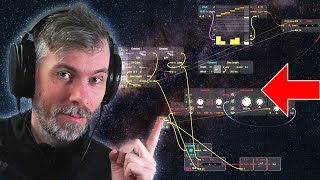
May 30, 2025 Tutorial
In this video, I walk you through a simple and straightforward Bitwig Grid setup for generating probabilistic melodies by storing scale notes and assigning individual probabilities to each. I show how to record and synchronize these generative sequences so you can capture stable, repeating patterns with easy logic for playback and triggering new sequences. This patch is perfect for creating evolving melodies, and you can download it on my Patreon if you don't want to build it yourself.
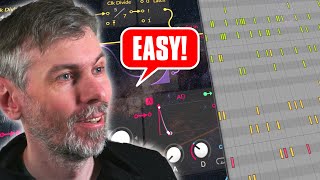
May 28, 2025 Tutorial
In this video, I explain how to create easy and interesting rhythms in Bitwig Studio using the Poly Grid, by sequencing pitches and controlling their playback with triggers, counters, and various clock modules. I show how combining different rhythms and voice stacking can quickly lead to complex, evolving melodies, and demonstrate how to record the resulting MIDI for use elsewhere. Overall, the workflow is flexible, allowing for endless creative possibilities with just a few simple modules.
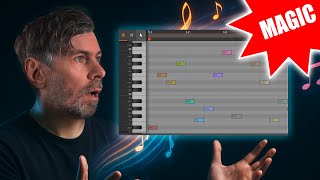
Apr 04, 2025 Tutorial
In this video, I introduce the latest update to my melody maker script, showcasing new features that allow for more expressive and randomized sequences with just one click. I demonstrate how the updates include randomized parameters like timbre, pressure, and release velocity, as well as advanced options like motif development and rhythmic emphasis for creating more dynamic melodies. Additionally, I discuss some technical challenges with the API and share plans for upcoming updates to my other music scripts.
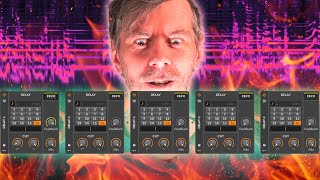
Feb 10, 2025 Tutorial
In this video, I explored Bitwig Studio by using the Delay 1 device to create extended looping effects without relying on a VST. By chaining multiple delay units and incorporating quantization, I achieved synchronized, polyrhythmic loops that can be layered to produce ambient tracks effortlessly. I shared this technique as a straightforward yet powerful way to innovate within Bitwig Studio, inviting viewers to try it themselves and share their experiences.

Jan 29, 2025 Tutorial
In this video, I introduced a new script I created for Bitwig Studio that addresses user complaints about the piano roll by generating random melodies in chosen scales with various customizable options like rest probability, note length variation, and octave start. The script is still experimental, and I'm seeking feedback from viewers to improve it, with plans to develop more features in the future. You can find the script in the description or on my GitHub or Patreon, and using it involves downloading a JavaScript file and setting it up in Bitwig's controller settings.
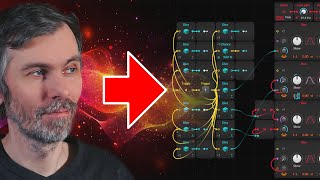
Dec 26, 2024 Tutorial
In this video, I demonstrated a random noise generator I created using a simple grid setup, which can produce interesting and usable sounds by applying various modulations and randomizations. I explained how to blend between random and sub oscillators to achieve different tonal qualities and shared that you can download this preset on my Patreon. Additionally, I highlighted the technical aspects behind the setup, aiming to inspire viewers to experiment with creating random sounds.
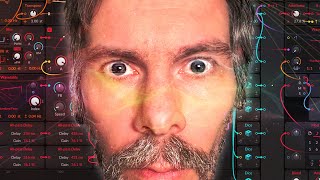
Dec 09, 2024 Tutorial
In this video, I explore the new Stepwise sequencer and modules in Bitwig Studio 5.3, showing how they simplify creating polyrhythms and polymeters within the Grid environment. I demonstrate how to manipulate sequence parameters like loop length, step offset, and playback speed, using features like voice stacking and stereo signal processing to create complex and unique sequences. I'm excited to see how these updates enhance creative possibilities and invite you to share your thoughts and questions in the comments.

Nov 28, 2024 Tutorial
In this video, I dive into Bitwig Studio's new Stepwise step sequencer, exploring its integration with drum machines and how it can be customized using Bitwig's modular system. I demonstrate various techniques to enhance its basic features, such as adding probability, velocity, and groove using modulators and note effects. Through experimentation and creativity, I show how Stepwise, though basic, can be a powerful tool for creating unique musical patterns.

Oct 25, 2024 Tutorial
In this video, I demonstrated how to create feedback loops in Bitwig Studio's grid using noise sources, delay, and auto gain to maintain stable levels and explore unique soundscapes. I showed how to incorporate various effects, such as phasers and filters, within the loop to alter the sound while using post-effects like reverb and pitch correction for additional texture. I've also included a downloadable setup for you to try out and experiment with the techniques discussed.
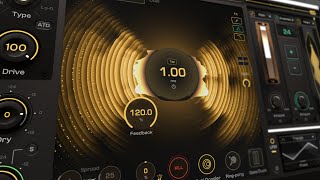
Oct 23, 2024 Tutorial
I recently explored the Ripple Delay plugin by Process Audio and found its ability to integrate effects within the feedback loop, while allowing delay times as low as one millisecond, to be quite impressive. This feature is currently challenging to replicate in Bitwig Studio due to its limitations with buffer size, which affects delay time when effects are included in the feedback chain. I'm hopeful for future updates in Bitwig, but in the meantime, I recommend trying out this plugin to experiment with creating unique soundscapes.
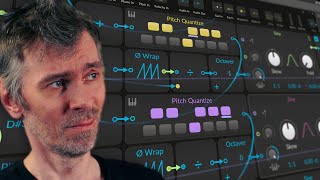
Oct 17, 2024 Tutorial
In this video, I demonstrate how to create interesting descending and ascending pitch sequences in Bitwig Studio's grid by using modules like pitch bus, octave wrapper, and pitch quantizer. I explain how to maintain pitches within a specific octave, use the transport module for polyrhythmic structures, and combine multiple sequences with different parameters. You can find the patch linked in the description to explore these concepts further.
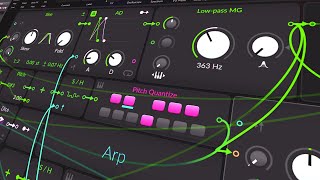
Jul 22, 2024 Tutorial
In this video, I create a generative patch using a Poly-Grid instrument track in monophonic mode. I experiment with feedback for pitch generation and incorporate audio pitch modulation. I add various effects like delay, chorus, filter, and reverb to shape the sound, and create a complex and evolving composition.
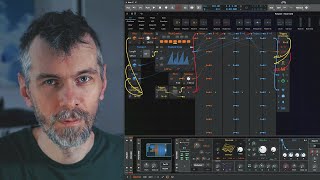
Jun 24, 2024 Tutorial
In this video, I demonstrate how to create a random note generator using the Polymer synthesizer in Bitwig Studio. I use the Node Grid and the Dice module to generate random nodes, and the Triggers module to create eight equally spaced triggers within one bar. I then use the Shift register to record and modify the generated sequence, allowing for variations and alterations in the playback.

Jun 19, 2024 Tutorial
In this video, I introduced my Markov Chains preset, which is a melody generator based on probabilities. I explained how it works and how I coded it using information from the Hook Theory website. I demonstrated how to create an ambient drone sound using the preset and additional modulations and effects.

Jun 17, 2024 Tutorial
In this video, I explore creating new sounds using the Bitwig Grid. I start by sampling different instruments and then manipulate the samples using various modules such as triggers, quantizers, and modulation. The result is a unique and atmospheric ambient sound that can be further customized and experimented with.
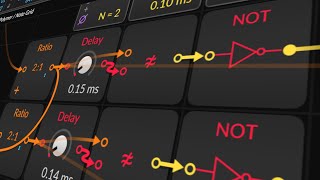
Jan 18, 2024 Tutorial
In this video, I showcase an interesting technique in Bitwig where I create a musical composition using only a node grid instead of traditional note creation methods. By manipulating pitch ratios, step mods, and triggers, I generate unique polyrhythmic patterns and head sounds. I demonstrate how to use the node grid to control multiple instruments, apply effects like reverb and convolution, and create complex chord progressions using subtract and quantize modules.
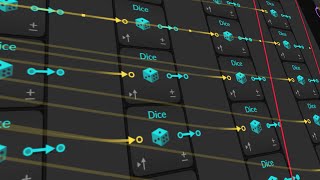
Jan 18, 2024 Tutorial
In this video, I demonstrate a generative techno patch using a sequencer and various modules. The patch allows for the creation of unique kick drums, melodies, and snare sounds while keeping the hi-hats consistent. I also explain how I used modulation and filtering techniques to add variety and create different sounds for each iteration of the track.

Dec 13, 2023 Tutorial
In this video, I share an idea I had to generate presets on the fly using a note grid and MIDI modulators in Bitwig Studio. By assigning different CC numbers to each voice in the note grid, I can generate random CC values and use them to modulate various parameters of synthesizers or effects. This approach allows for dynamic and unique sound variations within a song or live set.
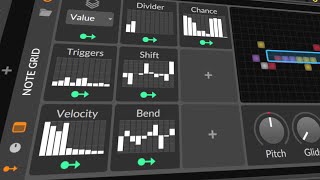
Dec 11, 2023 Tutorial
In this video, I show how to create a drum sequencer in Bitwig Studio using the note grid and various modules. By selecting a drum sampler or VST, creating note clips, and manipulating triggers, velocity, and timing, I demonstrate how to generate unique drum sequences. I also explore features like note stacking, shifting, quantizing, and randomization to create diverse and customizable drum patterns.
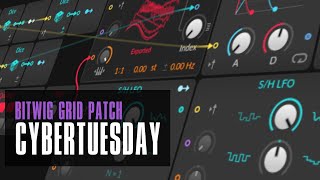
Nov 28, 2023 Tutorial
In this video, I create a generative ambient patch from scratch using Bitwig Studio. I start by creating a drone sound using polygrid and adding pitch modulation to create different pitches on the left and right sides. I then add effects like chorus and filters to add depth and modulation to the sound.
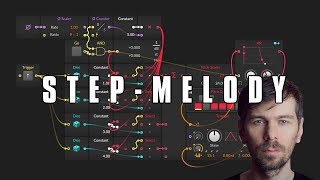
Jul 02, 2019 Tutorial
In this video, I show you how to create a step sequencer that generates a melody on a click and in scale. I start by setting up a polygrid and creating a clock using a scaler. Then, I use a counter to create the step sequencer and apply some math to get clean integer values for each step. I use a dice to generate random notes and a comparing module to trigger the steps. I also use a pitch scaler to narrow down the range of the notes and a pitch quantize module to further refine the melody. Finally, I demonstrate how to use logic operators like smaller and bigger to manipulate the signals. Overall, it's a basic setup, but you can customize and expand on it as you wish.
More Tags to choose from:
posts Bitwig FromScratch Tutorial German Talk Skyence bitwig-guides Audio-FX Poly-Grid articles Guidelines Knowledge PDF Brain Neurosience Webtool Tempo Mixing Harmony helpers Chords Scales community-report Community release Polarity Music Bandcamp music-videos Ambient Hardware Jam Drum-and-Bass Mixtape fawm Behringer Moog Retro polarity-music Bitwig-2.0 VST-Plugin Audio-Effects Bitwig-3.0 Presets Sampling Generative Melodies Note-Grid Bitwig-3.2 Modulators Bitwig-3.1 Plugins Preset Sound-Design Replace VST Note-FX Polysynth MPE Roli Melda Bitwig-4.4 MinimalAudio Distortion Midi Arturia Groove Drums Filters FX-Grid Bitwig-4.3.4 Physical-Modeling Eurorack Instrument Arrangement Automation Risers Transitions Audio2Midi OpenSource PlugData Reverb Clever-Audio-Plugin-Clap AI download FM-synths machine-learning oscillators soniccharge Sound-Generator SynPlant Synthesizers Compiler Heavy-Compiler Synth Current Granular-Synthesis Pads Vector XY-Instrument Touch-Designer Video-Edit Visuals Extension Beginners Bitwig-5.1 Glitch Sync Delay Signals xlnaudio additive Sequencer Euclidean Bitwig-5.1.2 No-Grid Stock Finishing-Songs Thoughts Browser Jazz M1 Convolution Polyrhythm Polymeter Clip-Launcher AudioThing Lese Techno Modulation Synthwave Routing Spectral tests paulxstretch Triton Grains Patreon Utility Analogue Oeksound Bitwig-5.1.6 Kilohearts Project Bitwig-1.3.16 Tegeler Wavetable tbproaudio Amiga Bitwig-5.1.7 Trance Bitwig-5.2b1 Theming Giveaway Bitwig-5.2b2 Segments Ableton Bitwig-5.2b5 key-tracking EQ zplane Bitwig-5.2b7 Calculations Markov Shift-Register Bitwig-5.2b8 Bitwig-5.2b10 Voice-Stacks Bitwig-5.2b11 Feedback Dynamics Bitwig-5.2b12 Bitwig-5.2b13 Bitwig-5.2 sonnox dadalife Bitwig-5.2.1 Bitwig-5.2.2 Bitwig-5.2.3 Problems Audio-Tracks reaction EDM Bitwig-5.2.4 Kickdrums fft Software Bitwig-5.2.5 process.audio Impulse-Responses Bitwig-5.3b1 Freq-Shifter Bitwig-5.3b2 Bitwig-5.3b3 Bitwig-5.3b4 StateOfBitwig Bitwig-5.3b5 Mastering ControllerScript Bitwig-5.3.2 openDAW Bitwig-5.3b10 Bitwig-5.3.1 Bitwig-5.3.8 Connect-4-12 GRMTools Waveguide reloop Bitwig-5.3.10 Application Bitwig-6b1 Bitwig-6b2 Bitwig-6b3 bitwig-grid-course bitwig-classic-sounddesign






















